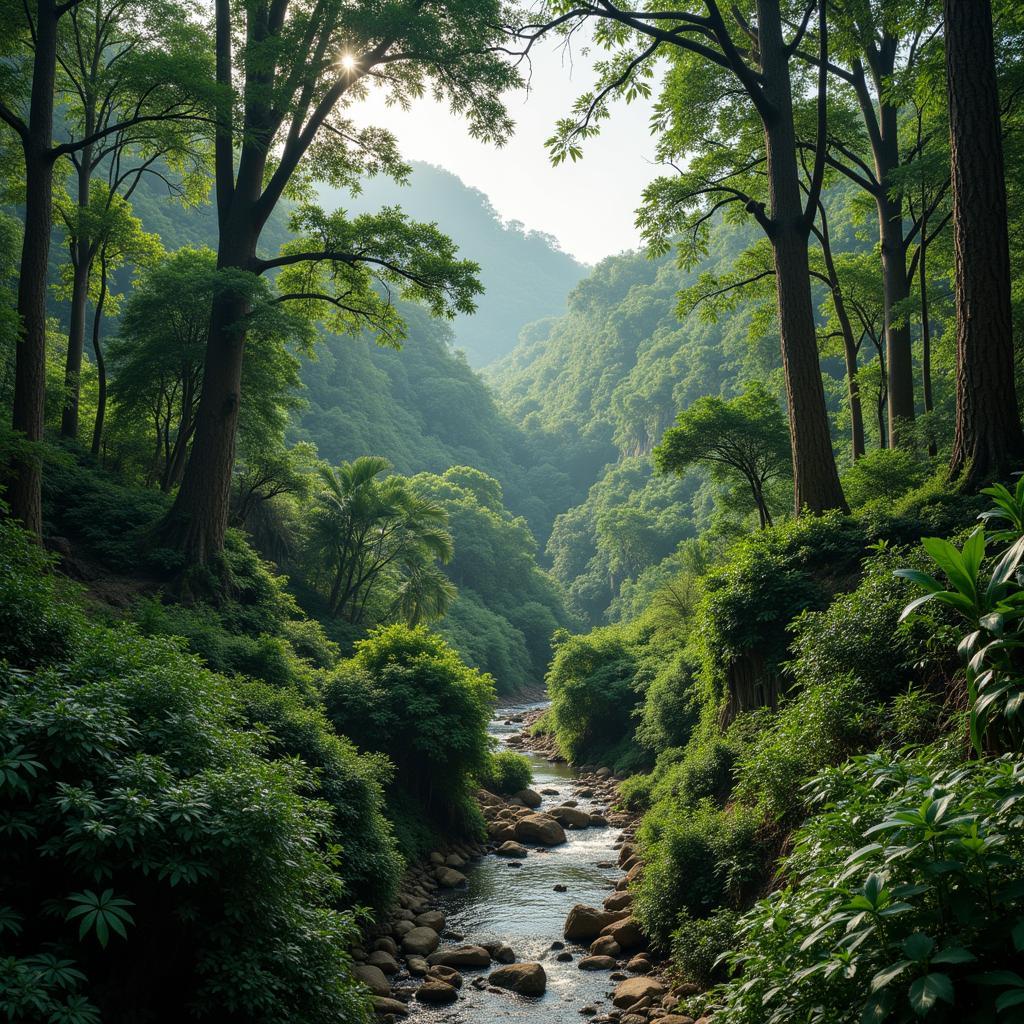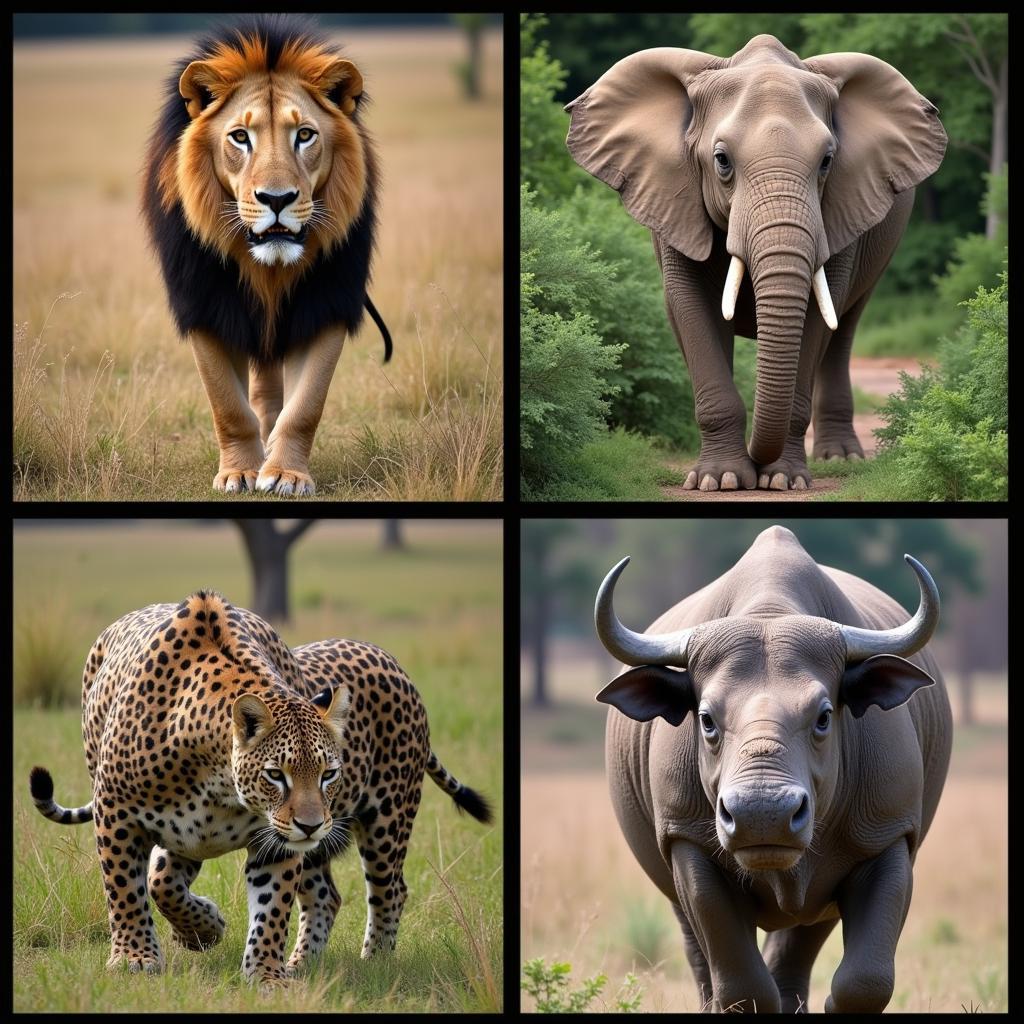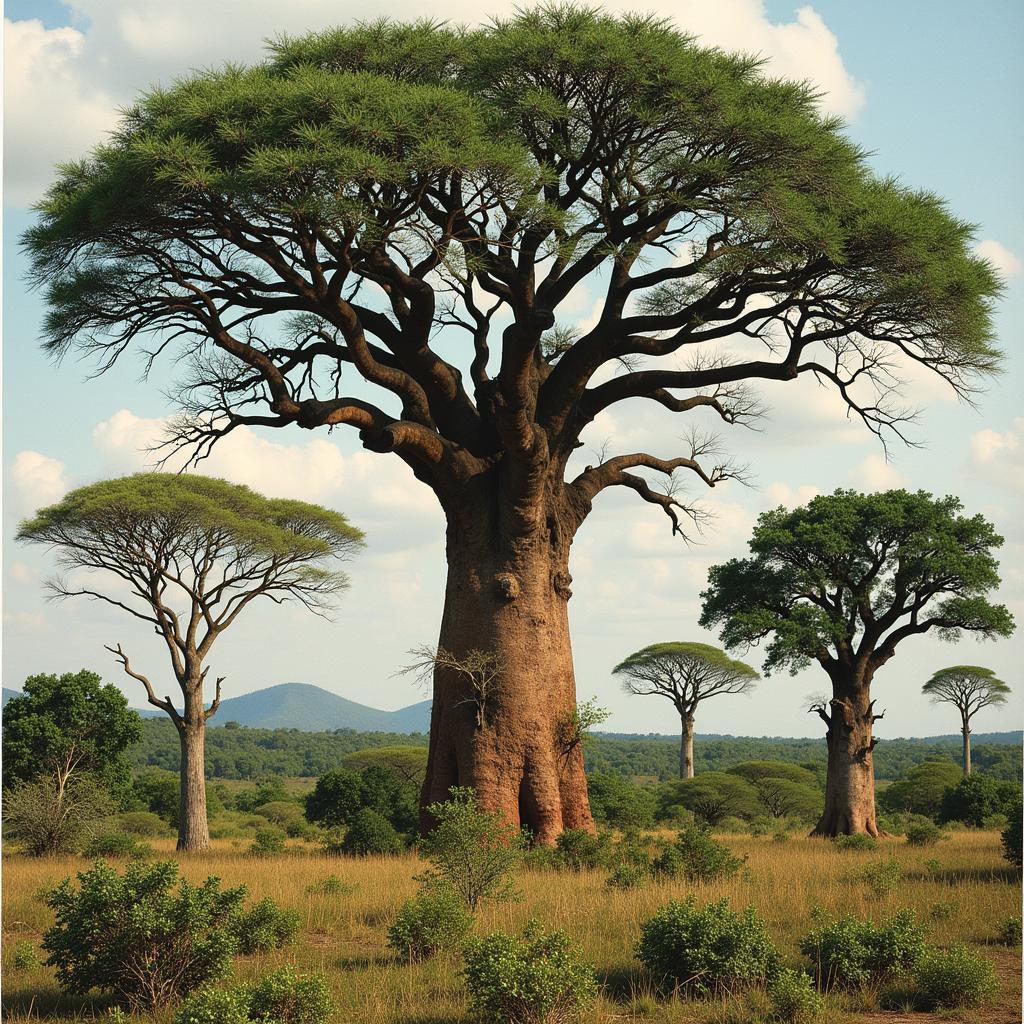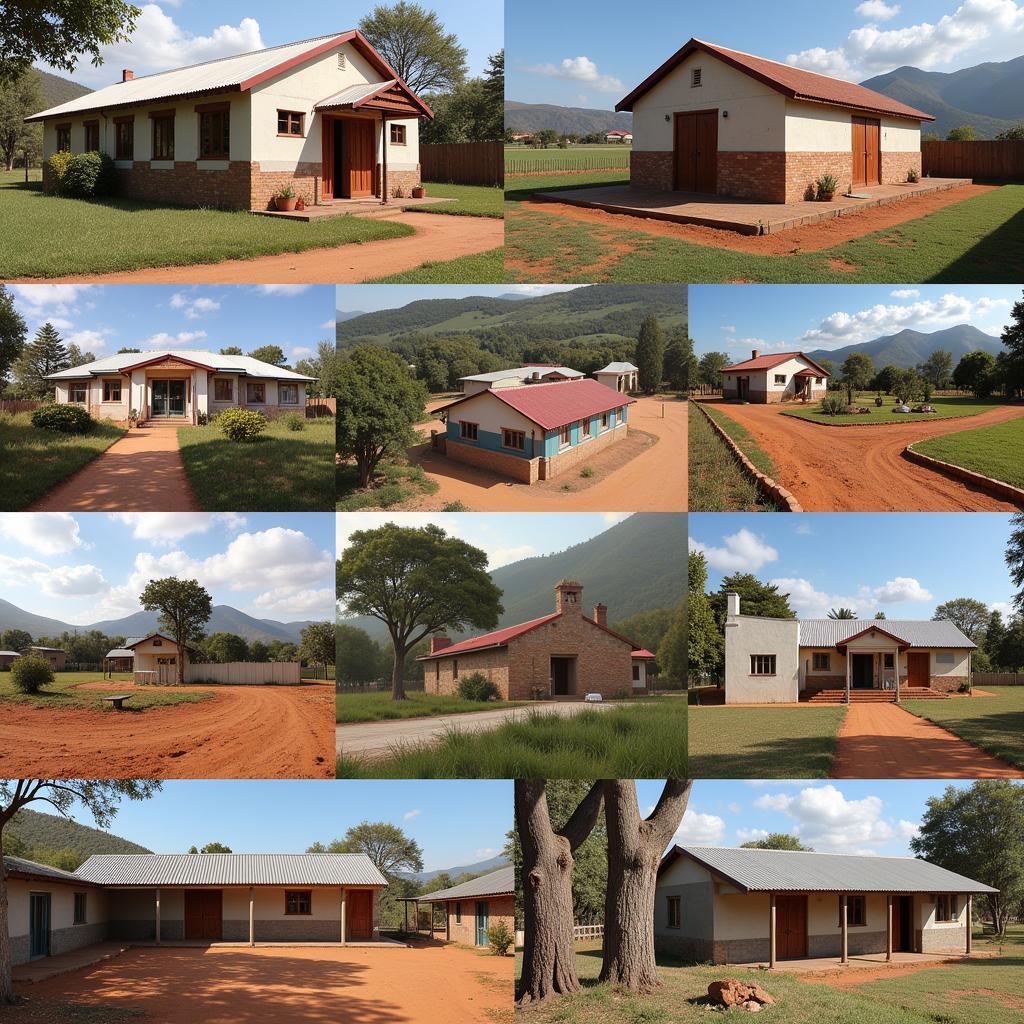African Jungle Animals and Plants: A Journey into Biodiversity
The African jungle, a vibrant tapestry of life, teems with a diverse array of animals and plants, showcasing nature’s creativity at its finest. From the iconic giants to the smallest insects, each species plays a crucial role in maintaining the delicate balance of this ecosystem.
 African Jungle Landscape
African Jungle Landscape
The Big Five and Beyond: Iconic African Jungle Animals
The African jungle is renowned for hosting some of the planet’s most captivating creatures. The “Big Five” – lion, elephant, leopard, rhinoceros, and buffalo – reign supreme, drawing visitors from across the globe.
- Lions, with their majestic manes and thunderous roars, are the undisputed kings of the jungle, ruling their territories with pride.
- African elephants, the largest land mammals, roam the savannas in herds, their sheer size and power a testament to nature’s grandeur.
- Leopards, masters of stealth and camouflage, stalk their prey with grace and precision, their spotted coats blending seamlessly with the dappled sunlight.
- Rhinoceroses, ancient and armored, are a symbol of resilience and strength, their horns a coveted prize, sadly fueling poaching and pushing them towards extinction.
- African buffalo, massive and powerful, graze in vast herds, their social bonds and collective defense mechanisms ensuring their survival.
 African Jungle Animals – The Big Five
African Jungle Animals – The Big Five
Yet, the jungle’s allure extends far beyond the Big Five. Endangered gorillas inhabit the dense rainforests, their intelligence and social complexity mirroring our own. Agile chimpanzees swing through the canopy, their playful nature and problem-solving abilities a constant source of fascination. Elusive wild dogs, painted with their distinctive black, white, and tan markings, hunt in coordinated packs, their strategies a testament to their remarkable intelligence.
A Symphony of Flora: Plants of the African Jungle
The plant life in the African jungle is as diverse and fascinating as the animals that call it home. From towering trees that form the canopy to delicate orchids that bloom in the undergrowth, each plant species plays a crucial role in the ecosystem.
- The baobab tree, with its distinctive bottle-shaped trunk, can live for thousands of years, storing vast amounts of water to survive the harsh dry seasons.
- Acacia trees, with their thorny branches and delicate leaves, are a vital food source for many herbivores, their seeds dispersed far and wide by animals.
- Mangrove forests, found along the coastlines, provide a crucial nursery for fish and other marine life, their tangled roots filtering the water and protecting the shoreline from erosion.
 African Jungle Plants
African Jungle Plants
The Interplay of Life: African Jungle Food Chain
The intricate food web of the African jungle connects predators and prey in a delicate dance of survival. Lions, as apex predators, sit atop this pyramid, relying on their strength and hunting prowess to bring down zebras, wildebeest, and other herbivores. These herbivores, in turn, graze on the abundant vegetation, their grazing habits shaping the landscape and influencing the distribution of plant life.
Scavengers, such as hyenas and vultures, play a vital role in cleaning up carcasses, preventing the spread of disease and returning nutrients to the soil. Insects, too numerous to count, pollinate plants, decompose organic matter, and serve as a crucial food source for birds, reptiles, and amphibians.
Threats to the African Jungle
Sadly, the incredible biodiversity of the African jungle faces numerous threats. Deforestation, driven by agriculture, logging, and human expansion, fragments habitats and disrupts animal populations. Climate change, with its unpredictable rainfall patterns and rising temperatures, puts further pressure on already stressed ecosystems.
african jungle clipart black and white easy
Poaching, driven by the illegal wildlife trade, decimates populations of elephants, rhinos, and other iconic species. The demand for ivory, rhino horn, and other animal parts fuels a cruel and unsustainable industry that threatens the very survival of these magnificent creatures.
Conservation Efforts and the Future of the African Jungle
Despite the challenges, there is hope for the future of the African jungle. Dedicated conservationists, researchers, and local communities are working tirelessly to protect this precious ecosystem.
- National parks and reserves have been established to safeguard critical habitats and provide safe havens for endangered species.
- Anti-poaching units work tirelessly to combat the illegal wildlife trade, using advanced technology and intelligence gathering to track down poachers and bring them to justice.
- Community-based conservation programs empower local people to become stewards of their own environment, promoting sustainable livelihoods that are in harmony with nature.
Conclusion: A Call to Action
The African jungle, a treasure trove of biodiversity, is a source of wonder, inspiration, and vital resources for the entire planet. Protecting this unique ecosystem requires a global effort, with individuals, governments, and organizations working together to address the threats and ensure its survival for generations to come.
By supporting sustainable practices, raising awareness about the plight of endangered species, and advocating for policies that promote conservation, we can all play a part in ensuring that the African jungle continues to thrive. Let us be the generation that turns the tide, protecting this extraordinary legacy for the future.
FAQ
1. What is the difference between a jungle and a rainforest?
While often used interchangeably, “jungle” typically refers to dense, impenetrable vegetation, often found at the edges of rainforests. Rainforests, on the other hand, are characterized by tall trees forming a closed canopy and receiving high levels of rainfall.
2. What is the best time of year to see animals in the African jungle?
The dry season, generally from June to October, is often considered the best time for wildlife viewing. Animals congregate around water sources, making them easier to spot.
3. How can I help protect the African jungle?
You can support conservation organizations working in Africa, choose sustainable travel options, educate yourself and others about the issues, and advocate for policies that protect wildlife and their habitats.
Need More Information?
For stunning visuals of African cats, explore our African cats wallpaper collection. Looking for high-definition images of the African jungle? Check out our African jungle images hd page.
If you need assistance or have any questions, please contact us at +255768904061 or kaka.mag@gmail.com. You can also visit us at Mbarali DC Mawindi, Kangaga, Tanzania. We are available 24/7 to assist you.


